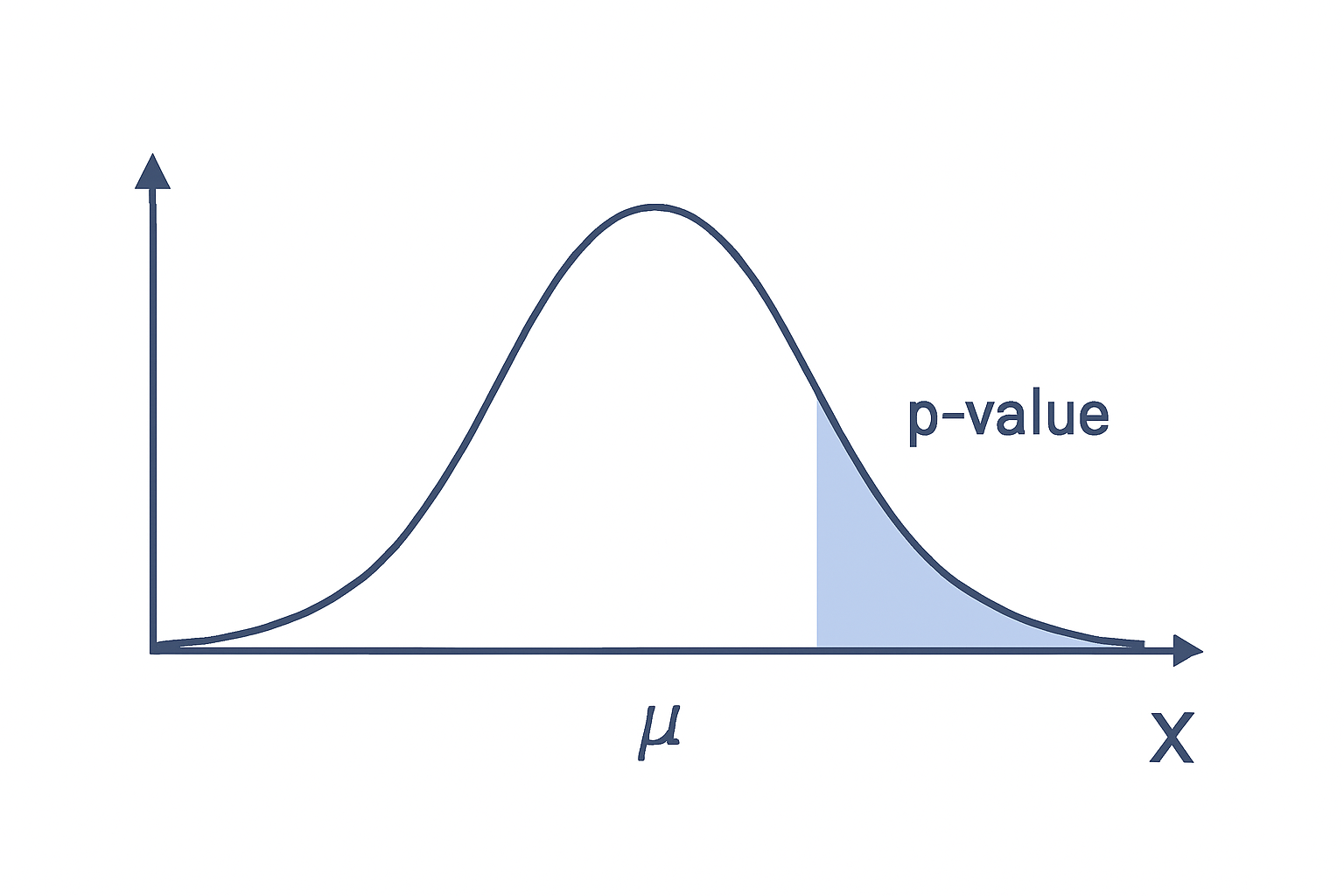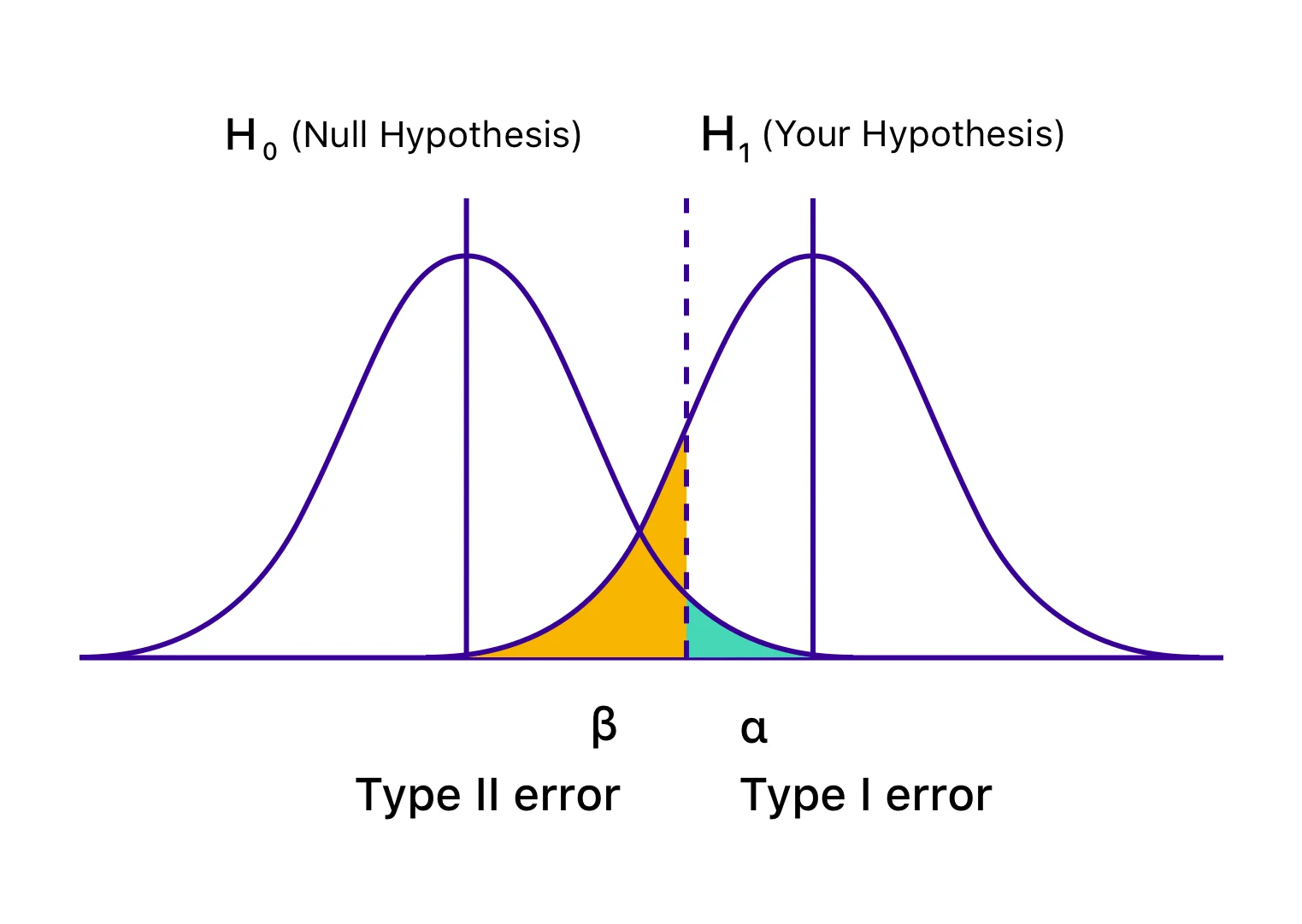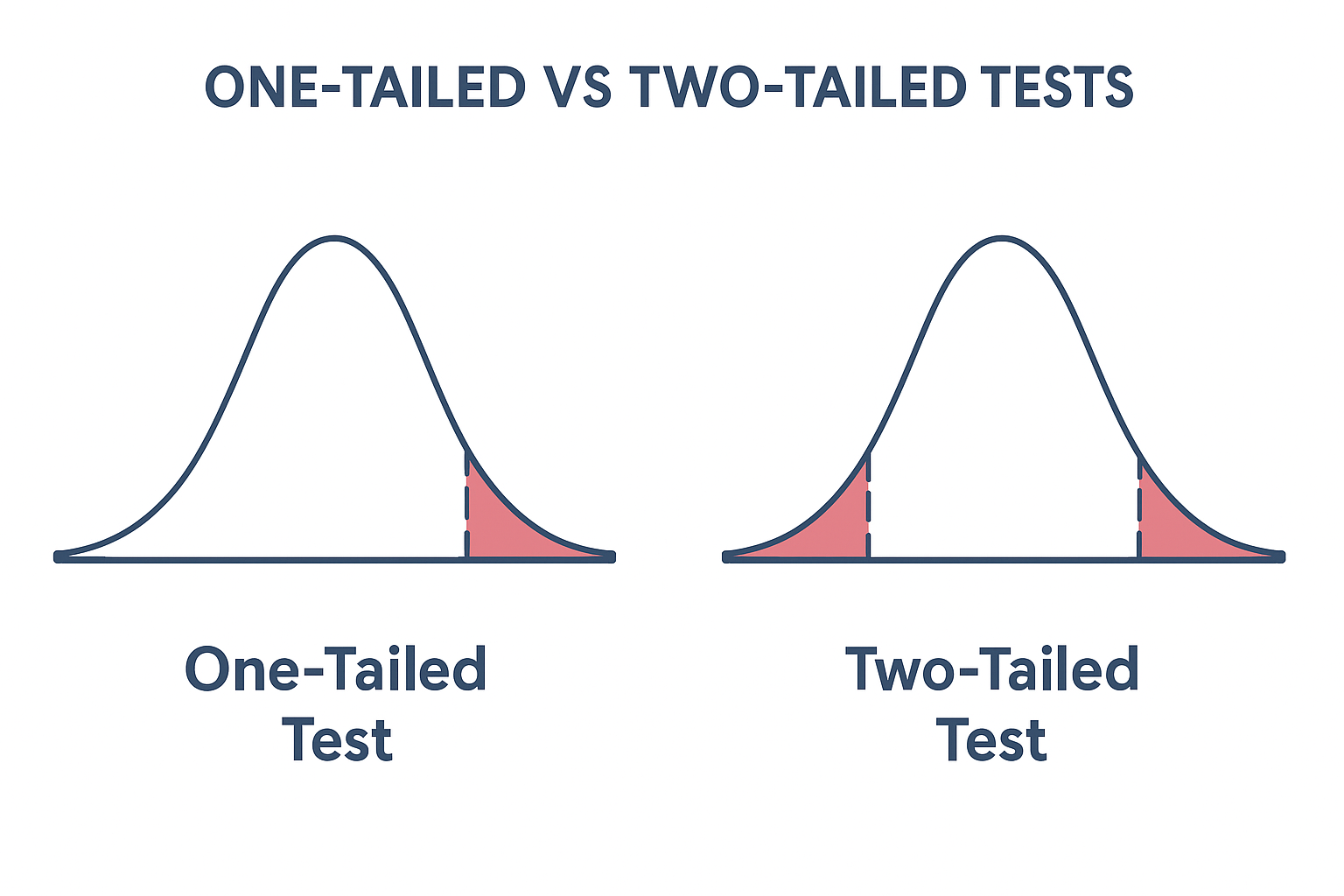
All Programs
- Switzerland Campus
School of Management
School of Computer Science
- Doctorate in Business Administration
Research Programs
- Bachelor of Business Administration
Bachelor's Programs

About EIMT
Student Zone
Switzerland Campus
About EIMT
Research
Student Zone
How to Apply
Apply Now
Request Info
Online Payment
Bank Transfer
Home / Hypothesis Testing in Statistics: Types, Steps, Examples
MANAGEMENT
Dec 2, 2025
Hypothesis testing is one of the foundations of inferential statistics, giving researchers, businesses, and data experts a way to turn sample data into decisions they can trust.
Consider this: you might want to test whether a new drug actually works, whether an advertising campaign is increasing sales, or if a new production process is reducing errors. Hypothesis testing provides you a structured way to determine whether the changes you observe are significant, or if they’re just random chance.
This article provides an exhaustive guide to hypothesis testing in statistics, covering:
By the end of this article, you’ll not only understand how hypothesis testing works but also know when and how to apply it effectively.
Hypothesis testing is a statistical technique employed to make inferences about populations on the basis of sample information. It involves establishing rival assumptions (hypotheses) and making use of the theory of probability to decide which assumption is more well-supported through data.
Example:
The goal is to test whether the observed data provide enough statistical evidence to reject H₀ in favor of H₁.
Hypothesis testing works like a trial, where collected data serves as evidence to decide whether to reject H₀ in favor of H₁ or not. The goal is to assess the strength of the evidence against the null claim.
A test statistic is a numerical value based on your sample data that assists in quantifying how much your observed outcomes deviate from what would occur if the null hypothesis (H₀) were true.
Consider it as a score that indicates how distant your data is from the initial assumption (no effect). Typical test statistics include Z, t, and Chi-square values.
This number enables you to determine if the data you've seen is abnormal enough to reject the null hypothesis or if it can be explained by normal chance variation.
The significance level (α) is the threshold used to determine whether or not to reject the null hypothesis (H₀) in hypothesis testing. It is a threshold probability, typically established prior to data collection, most often at 0.05 (which implies 5%).
You will see the p-value and contrast it with α in the output or results of the statistical test that you conduct using software or methods of computation. Most statistical tools — like SPSS, R, Python, or even Excel — will automatically give you the p-value once you run a hypothesis test.
In short, your significance level α is your criterion for determining whether your findings are "statistically significant" and unlikely to be due to chance. It determines how strong the evidence needs to be to reject the null hypothesis.
The p-value helps you to determine if the results you are seeing in your data are likely just by chance or actually meaningful.
Think of it this way:
In short, the p-value acts like a “signal strength meter.” It tells you whether your findings are strong enough to move away from the null hypothesis and lean toward the alternative.

Figure: p-value illustration on a normal curve
This shows that the p-value is the “chance of seeing this data (or worse) if H₀ is correct.”
|
Error Type |
What It Means |
Example in Our Context |
|
Type I Error (α) |
Rejecting H₀ when it is actually true |
Saying the medicine works when it really doesn’t. |
|
Type II Error (β) |
Failing to reject H₀ when it is actually false |
Saying the medicine doesn’t work when it actually does. |
When you do a hypothesis test, there are two situations:
And there are two possible decisions you can make after the test:
The table shows what happens in each case:
|
What You Decide |
If H₀ is True (No Real Effect) |
If H₀ is False (Real Effect Exists) |
|
Reject H₀ |
Wrong! You said there is an effect when there isn’t (Type I Error) |
Correct! You correctly found the effect. |
|
Fail to Reject H₀ |
Correct! You said there is no effect and there really isn’t one. |
Wrong! You missed the effect (Type II Error) |
In simple words:

The above figure illisutrates:
Reality: H₀ true → Decision: Reject H₀ → Type I Error
Reality: H₀ false → Decision: Fail to Reject H₀ → Type II Error
Power of a test = 1 – β (ability to detect true effects).

Every test starts with two simple claims. The null hypothesis (H₀) says “nothing’s happening, no real difference.” The alternative hypothesis (H₁) is the opposite — it’s the idea you want to prove, like “yes, there is a difference or effect.”
Example:
Before checking the numbers, decide how much chance of being wrong you can live with. Most people go with 5% (α = 0.05). That simply means: “I’m okay with being wrong 5 times out of 100 if I reject the null.”
Not all tests work the same way. Which one you use depends on your data:
Think of this step as choosing the right tool from the toolbox.
Now crunch the numbers. The test statistic is just a score that tells you how far your data is from what the null hypothesis expected. Then comes the p-value — it tells you how surprising your result is if H₀ were actually true.
Here’s the big decision:
In short: small p-values mean stronger evidence against the null.
Wrap it up with a clear statement. Either say, “Yes, we found strong evidence of an effect,” or “No, the evidence isn’t strong enough to claim a difference.”
Example:
This test is handy when you’ve got a large sample size (usually more than 30) and you already know the population variance. Think of it like checking if the average IQ in a group is really different from 100.
When your sample is small (30 or fewer) and you don’t know the population variance, the t-test comes into play. It has a few versions:
Example: Seeing if two classes perform differently on an exam.
This one works with categories instead of numbers. It helps you see if two variables are related, like whether purchase preference depends on gender.
If you want to compare more than two groups at once, ANOVA is your tool. For instance, checking if people from low, middle, and high-income groups spend differently.
When your data doesn’t follow the normal distribution rules, these tests step in. Examples include the Mann-Whitney U test, Wilcoxon signed-rank test, and Kruskal-Wallis test.

One-tailed focuses on a single direction of effect, while two-tailed considers deviations in both directions.
Statistical significance ≠ practical importance.
Always interpret p-value with effect size and context.
Violating these can lead to misleading conclusions.
Q1. What is the difference between - one-tailed and two-tailed test?
A one-tailed test looks for an effect in one direction only. While a two-tailed test checks both directions.
Q2. Why is α = 0.05 commonly used in Hypothesis testing?
The value of α = 0.05 as it balances false positive risk (Type I error) and sensitivity.
Q3. Can a p-value be exactly zero?
No. It can be extremely small but never exactly zero.
Q4. What is test power?
Power = 1 – β. This is the probability of detecting an actual effect.
Q5. What if data doesn’t meet assumptions?
In that case, you have to use non-parametric tests (e.g., Mann-Whitney, Wilcoxon).
Hypothesis testing is one of the clearest and powerful statistical techniques to turn data into real decisions. When you set up the right question, pick the right test, and look beyond just the p-value, you lower the chance of mistakes and uncover what’s actually happening. Whether you’re trying to boost sales on a website, check if a new medicine really works, or keep product quality steady, hypothesis testing gives you a solid base for making choices backed by evidence.
Stay Connected !! To check out what is happening at EIMT read our latest blogs and articles.